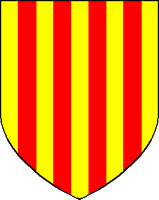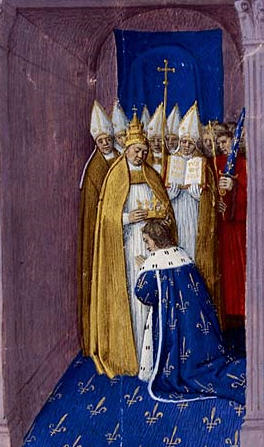|
County Of Rosselló
The County of Roussillon ( ca, Comtat de Rosselló, , la, Comitatus Ruscinonensis) was one of the Catalan counties in the Marca Hispanica during the Middle Ages. The rulers of the county were the counts of Roussillon, whose interests lay both north and south of the Pyrenees. Roussillon, historical and cultural region encompassing the southern French ''département'' of Pyrénées-Orientales and coextensive with the former province of Roussillon. Its chief city has always been Perpigna Visigothic county There was a Visigothic county around the city of Ruscino in the 6th and 7th centuries with a jurisdiction corresponding to the Diocese of Elna. This early county comprising the historic ''comarques'' of Plana del Roselló, Conflent, and Vallespir was created by Visigothic king Liuva I in 571. The Visigothic legacy in Roussillon survived in its courts, where Liber Iudiciorum, Visigothic law was applied exclusively as late as the 11th century. Roussillon was occupied by the Moors in ... [...More Info...] [...Related Items...] OR: [Wikipedia] [Google] [Baidu] |
Catholic Church
The Catholic Church, also known as the Roman Catholic Church, is the largest Christian church, with 1.3 billion baptized Catholics worldwide . It is among the world's oldest and largest international institutions, and has played a prominent role in the history and development of Western civilization.O'Collins, p. v (preface). The church consists of 24 ''sui iuris'' churches, including the Latin Church and 23 Eastern Catholic Churches, which comprise almost 3,500 dioceses and eparchies located around the world. The pope, who is the bishop of Rome, is the chief pastor of the church. The bishopric of Rome, known as the Holy See, is the central governing authority of the church. The administrative body of the Holy See, the Roman Curia, has its principal offices in Vatican City, a small enclave of the Italian city of Rome, of which the pope is head of state. The core beliefs of Catholicism are found in the Nicene Creed. The Catholic Church teaches that it is the on ... [...More Info...] [...Related Items...] OR: [Wikipedia] [Google] [Baidu] |
Liuva I
Liuva I (died 570, 571-572, or 573) was a Visigothic King of Hispania and Septimania. Biography He was made king at Narbonne following the death of Athanagild in 567. Roger Collins notes this was the first time a Visigothic king is mentioned in the north-eastern region of the realm since 531, when Amalaric was murdered. He suggests Liuva's coronation near the border with the Franks was because of renewed threats from that neighbor; under Guntram, the Franks are known to have posed more of a threat to the Visigoths. This threat would also explain why in the second year of his reign, Liuva made his younger brother Liuvigild both co-ruler and heir, putting him in direct charge of Hispania Citerior, or the eastern part of Hispania. The Frankish threat may also explain why Liuva gave shelter to bishop Pronimius (modern French: ''Fronime''). Gregory of Tours states Pronimius had left Bourges to live in Septimania "for some reason or other". Liuva made him bishop of Agde, an office he he ... [...More Info...] [...Related Items...] OR: [Wikipedia] [Google] [Baidu] |
Basque People
The Basques ( or ; eu, euskaldunak ; es, vascos ; french: basques ) are a Southwestern European ethnic group, characterised by the Basque language, a common culture and shared genetic ancestry to the ancient Vascones and Aquitanians. Basques are indigenous to, and primarily inhabit, an area traditionally known as the Basque Country ( eu, Euskal Herria) — a region that is located around the western end of the Pyrenees on the coast of the Bay of Biscay and straddles parts of north-central Spain and south-western France. Etymology The English word ''Basque'' may be pronounced or and derives from the French ''Basque'' (), itself derived from Gascon ''Basco'' (pronounced ), cognate with Spanish ''Vasco ''(pronounced ). Those, in turn, come from Latin ''Vascō'' (pronounced ; plural '' Vascōnes''—see history section below). The Latin generally evolved into the bilabials and in Gascon and Spanish, probably under the influence of Basque and the related Aquitani ... [...More Info...] [...Related Items...] OR: [Wikipedia] [Google] [Baidu] |
Carolingian
The Carolingian dynasty (; known variously as the Carlovingians, Carolingus, Carolings, Karolinger or Karlings) was a Frankish noble family named after Charlemagne, grandson of mayor Charles Martel and a descendant of the Arnulfing and Pippinid clans of the 7th century AD. The dynasty consolidated its power in the 8th century, eventually making the offices of mayor of the palace and '' dux et princeps Francorum'' hereditary, and becoming the ''de facto'' rulers of the Franks as the real powers behind the Merovingian throne. In 751 the Merovingian dynasty which had ruled the Germanic Franks was overthrown with the consent of the Papacy and the aristocracy, and Pepin the Short, son of Martel, was crowned King of the Franks. The Carolingian dynasty reached its peak in 800 with the crowning of Charlemagne as the first Emperor of the Romans in the West in over three centuries. His death in 814 began an extended period of fragmentation of the Carolingian Empire and decline that w ... [...More Info...] [...Related Items...] OR: [Wikipedia] [Google] [Baidu] |
Tarraconensis
Hispania Tarraconensis was one of three Roman provinces in Hispania. It encompassed much of the northern, eastern and central territories of modern Spain along with modern North Region, Portugal, northern Portugal. Southern Spain, the region now called Andalusia was the province of Hispania Baetica. On the Atlantic west lay the province of Lusitania, partially coincident with modern-day Portugal. History Establishment The Phoenicians and Carthaginians colonised the Mediterranean coast of Iberia in the 8th to 6th centuries BC. The Greeks later also established colonies along the coast. The Romans arrived in the 2nd century BC during the Second Punic War. The province Hispania Citerior Tarraconensis was established in the reign of Augustus as the direct successor of the Roman Republican province of Hispania Citerior ('Nearer Spain'), which had been ruled by a propraetor.Livy, ''The History of Rome'', 41.8. The roots of the Augustan reorganisation of Hispania are found in Pompey t ... [...More Info...] [...Related Items...] OR: [Wikipedia] [Google] [Baidu] |
Reconquista
The ' (Spanish, Portuguese and Galician for "reconquest") is a historiographical construction describing the 781-year period in the history of the Iberian Peninsula between the Umayyad conquest of Hispania in 711 and the fall of the Nasrid kingdom of Granada in 1492, in which the Christian kingdoms expanded through war and conquered al-Andalus; the territories of Iberia ruled by Muslims. The beginning of the ''Reconquista'' is traditionally marked with the Battle of Covadonga (718 or 722), the first known victory by Christian military forces in Hispania since the 711 military invasion which was undertaken by combined Arab- Berber forces. The rebels who were led by Pelagius defeated a Muslim army in the mountains of northern Hispania and established the independent Christian Kingdom of Asturias. In the late 10th century, the Umayyad vizier Almanzor waged military campaigns for 30 years to subjugate the northern Christian kingdoms. His armies ravaged the north, even s ... [...More Info...] [...Related Items...] OR: [Wikipedia] [Google] [Baidu] |
Aprisio
Manorialism, also known as the manor system or manorial system, was the method of land ownership (or "tenure") in parts of Europe, notably France and later England, during the Middle Ages. Its defining features included a large, sometimes fortified manor house in which the lord of the manor and his dependents lived and administered a rural estate, and a population of labourers who worked the surrounding land to support themselves and the lord. These labourers fulfilled their obligations with labour time or in-kind produce at first, and later by cash payment as commercial activity increased. Manorialism is sometimes included as part of the feudal system. Manorialism originated in the Roman villa system of the Late Roman Empire, and was widely practiced in medieval western Europe and parts of central Europe. An essential element of feudal society, manorialism was slowly replaced by the advent of a money-based market economy and new forms of agrarian contract. In examining the or ... [...More Info...] [...Related Items...] OR: [Wikipedia] [Google] [Baidu] |
Charlemagne
Charlemagne ( , ) or Charles the Great ( la, Carolus Magnus; german: Karl der Große; 2 April 747 – 28 January 814), a member of the Carolingian dynasty, was King of the Franks from 768, King of the Lombards from 774, and the first Holy Roman Emperor, Emperor of the Romans from 800. Charlemagne succeeded in uniting the majority of Western Europe, western and central Europe and was the first recognized emperor to rule from western Europe after the fall of the Western Roman Empire around three centuries earlier. The expanded Frankish state that Charlemagne founded was the Carolingian Empire. He was Canonization, canonized by Antipope Paschal III—an act later treated as invalid—and he is now regarded by some as Beatification, beatified (which is a step on the path to sainthood) in the Catholic Church. Charlemagne was the eldest son of Pepin the Short and Bertrada of Laon. He was born before their Marriage in the Catholic Church, canonical marriage. He became king of the ... [...More Info...] [...Related Items...] OR: [Wikipedia] [Google] [Baidu] |
Narbonne
Narbonne (, also , ; oc, Narbona ; la, Narbo ; Late Latin:) is a commune in France, commune in Southern France in the Occitania (administrative region), Occitanie Regions of France, region. It lies from Paris in the Aude Departments of France, department, of which it is a Subprefectures in France, sub-prefecture. It is located about from the shores of the Mediterranean Sea and was historically a prosperous port. From the 14th century it declined following a change in the course of the river Aude (river), Aude. It is marginally the largest commune in Aude. But the capital of the Aude department is the smaller commune of Carcassonne. Geography Narbonne is linked to the nearby Canal du Midi and the river Aude (river), Aude by the Canal de la Robine, which runs through the centre of town. It is very close to the A9 motorway, which connects Montpellier and Nîmes to Perpignan and, across the border, to Barcelona in Spain. There is also a recently renovated train station which se ... [...More Info...] [...Related Items...] OR: [Wikipedia] [Google] [Baidu] |
Pepin The Short
the Short (french: Pépin le Bref; – 24 September 768), also called the Younger (german: Pippin der Jüngere), was King of the Franks from 751 until his death in 768. He was the first Carolingian to become king. The younger was the son of the Frankish prince Charles Martel and his wife Rotrude, Pepin's upbringing was distinguished by the ecclesiastical education he had received from the monks of St. Denis. Succeeding his father as the Mayor of the Palace in 741, Pepin reigned over Francia jointly with his elder brother Carloman. Pepin ruled in Neustria, Burgundy, and Provence, while his older brother Carloman established himself in Austrasia, Alemannia, and Thuringia. The brothers were active in suppressing revolts led by the Bavarians, Aquitanians, Saxons, and the Alemanni in the early years of their reign. In 743, they ended the Frankish interregnum by choosing Childeric III, who was to be the last Merovingian monarch, as figurehead king of the Franks. Being well ... [...More Info...] [...Related Items...] OR: [Wikipedia] [Google] [Baidu] |

.jpg)






